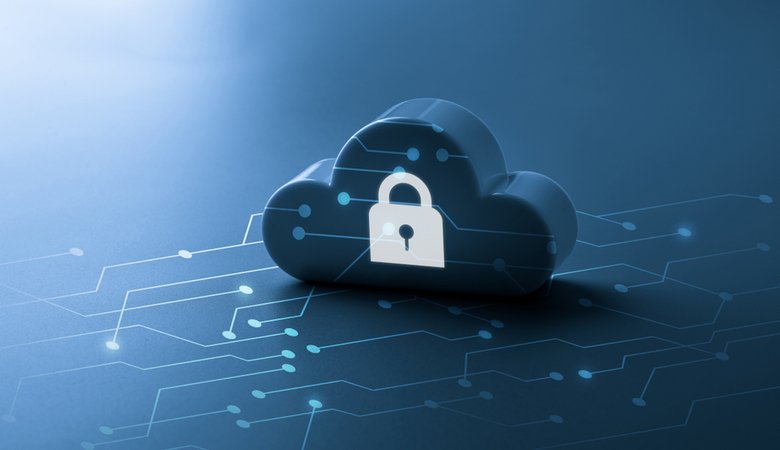The rapid shift to cloud computing has transformed the way businesses operate, offering scalability, flexibility, and cost savings. But it has also introduced new security challenges. As companies migrate to cloud platforms like AWS, Azure, and Google Cloud, the need for effective cloud security solutions becomes critical.
Cloud environments are vulnerable to misconfigurations, unauthorized access, and data breaches. Without robust data protection and access control, your organization’s sensitive information is at risk. This guide breaks down how to build a secure architecture in the cloud and protect your digital assets from evolving threats.
What Is Cloud Security?
Cloud security refers to the policies, technologies, and services that protect data, applications, and infrastructure in the cloud. These cloud security solutions work to prevent unauthorized access, data leaks, account hijacking, and service disruptions across public, private, and hybrid cloud environments.
Unlike traditional on-premises environments, cloud infrastructure is dynamic and shared, making visibility, control, and risk assessment essential components of any security framework.
Why Cloud Security Matters
- Shared Responsibility: Cloud providers secure the infrastructure, but customers are responsible for protecting their data and access.
- Growing Attack Surface: Cloud misconfigurations are one of the top causes of modern breaches.
- Remote Access: Distributed teams and global access increase exposure to unauthorized activity.
- Regulatory Compliance: Industries using the cloud must still meet strict compliance strategy requirements under frameworks like GDPR, HIPAA, and ISO.
Core Components of Cloud Security Solutions
1. Identity and Access Management (IAM)
Implement least-privilege access controls to ensure users only access what they need. Use multi-factor authentication (MFA) for added security.
2. Data Protection and Encryption
Encrypt data at rest and in transit. Cloud-native tools and third-party services help secure your storage buckets and databases.
3. Security Configuration Management
Use tools to detect and fix misconfigurations in real time. Continuous configuration monitoring is critical to avoid exposure.
4. Cloud Firewall and Web Application Firewall (WAF)
Control inbound and outbound traffic and defend against common threats like SQL injection, XSS, and DDoS attacks.
5. Threat Detection and Monitoring
Advanced monitoring services analyze logs and behaviors to detect intrusions and alert security teams instantly.
6. Secure Architecture Design
Design your cloud infrastructure with segmentation, redundancy, and access boundaries from the start.
7. Incident Response and Recovery
Plan for rapid recovery in the event of a breach, including backups, automated rollback, and alert workflows.
Benefits of Cloud Security Solutions
- 24/7 Visibility: Real-time monitoring of user activity, resources, and configuration changes.
- Improved Compliance Strategy: Tools to track and enforce regulatory compliance across platforms.
- Scalability and Flexibility: Security adapts to your changing cloud resources without slowing performance.
- Lower Risk of Data Loss: Encrypted backups and access control prevent accidental or malicious leaks.
- Faster Response Times: Automated alerts and responses to threats reduce manual effort and speed up containment.
Common Threats to Cloud Environments
- Misconfigured storage buckets (e.g., open S3 buckets)
- Unsecured APIs
- Overprivileged access
- Shadow IT (unsanctioned cloud use by employees)
- Account hijacking and credential theft
Proper risk assessment and ongoing security management help mitigate these threats effectively.
How We Can Help You
At Sentinel Cyber Defender, we provide tailored cloud security solutions designed for your infrastructure. Whether you’re on AWS, Azure, or Google Cloud, our services cover:
- Secure cloud architecture design and implementation
- Identity and access control configuration
- Threat detection, SIEM integration, and 24/7 monitoring
- Regulatory compliance audits and continuous assessments
- Disaster recovery and data protection services
We don’t just secure your cloud—we empower your team to operate confidently and compliantly within it.
Secure Your Cloud with Us
Sentinel Cyber Defender delivers enterprise-grade cloud security solutions to keep your digital assets safe. We help you design, monitor, and optimize your cloud environment with security in mind—every step of the way.
📩 Email info@sentinelcyberdefender.com or visit our offices in Dallas or Dubai to learn more.
Conclusion
The cloud opens endless opportunities—but only if protected. Robust cloud security solutions help organizations prevent data leaks, defend against cyber threats, and ensure reliable business continuity. With the right combination of access control, secure architecture, and risk assessment, your cloud environment can be a safe space for innovation.
Don’t wait for a breach to show you the value of cloud security. Strengthen your defenses now and protect what matters most.
FAQs
Q1: Is cloud data more vulnerable than on-premises data?
A: Not necessarily. Cloud data can be equally secure, provided the right security configurations and tools are in place.
Q2: How often should cloud security settings be reviewed?
A: Continuously. Use automation and monitoring tools to detect changes in real time and conduct manual reviews monthly.
Q3: What is the biggest security threat in the cloud?
A: Misconfigurations are the top cause of cloud security incidents, followed by access misuse.
Q4: Can cloud security solutions help with compliance?
A: Yes, they provide tracking, reporting, and enforcement tools to meet GDPR, HIPAA, and other compliance requirements.Q5: How do I get started with cloud security?
A: Start with a cloud risk assessment, then implement core tools like IAM, encryption, firewalls, and monitoring systems.

